4 Types of Jigsaw + Pros & Cons
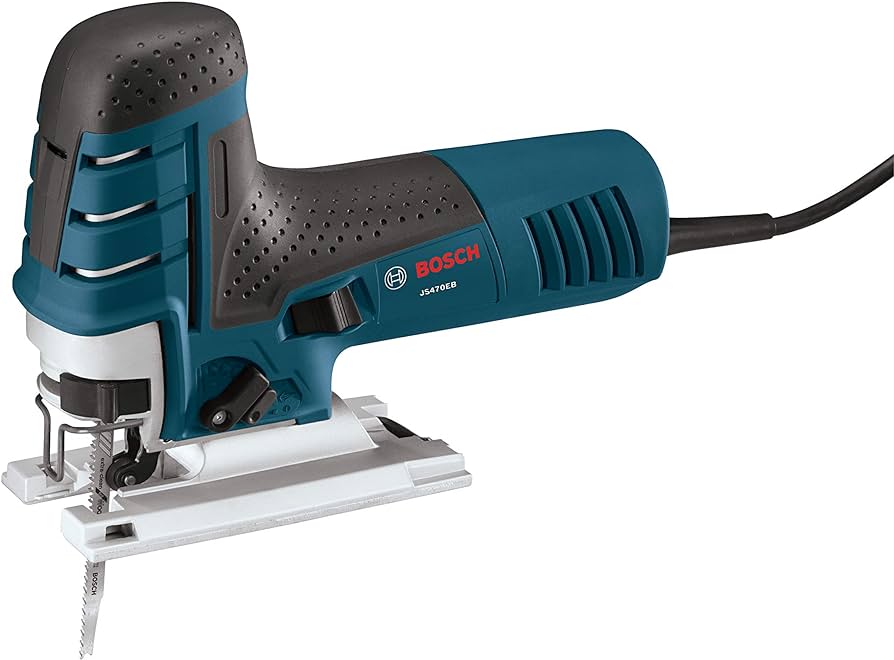

(adsbygoogle = window.adsbygoogle || []).push({});
Table of Contents
Jigsaws are indispensable tools in the realm of woodworking, metalworking, and DIY projects. With their unique ability to make intricate cuts, they have garnered immense popularity among professionals and hobbyists alike. Linquip, your trusted partner in equipment solutions, brings you an extensive exploration of the types of jigsaws available, assisting you in selecting the perfect one for your needs.
TLDR
Jigsaws are versatile tools integral to woodworking, metalworking, and DIY projects. They come in various types, including corded, cordless, pneumatic, and orbital, each with its unique features and applications. Modern jigsaws boast advancements such as variable speeds, laser guides, and tool-less blade changes. Linquip provides a comprehensive platform to explore and compare different jigsaw models, guiding users through their evolution, features, and helping them make informed decisions based on reviews and expert insights.
From their humble beginnings as manual fret saws in the 19th century to the technologically advanced tools of today, jigsaws have undergone significant transformations. As they’ve evolved, so has Linquip’s commitment to keeping users updated with the latest in jigsaw technology, offering webinars, workshops, and direct manufacturer interactions to ensure craftsmen and hobbyists alike find their perfect match.
What is a Jigsaw?
A jigsaw is a handheld tool equipped with a reciprocating blade to cut irregular curves in wood, metal, and other materials. Its versatility is unparalleled, especially when it comes to intricate and detailed work.
Common Types of Jigsaws
- Corded Jigsaws
- Cordless Jigsaws
- Pneumatic Jigsaws
- Orbital Jigsaws
Types of Jigsaw Table with Characteristics and Usage
| Type of Jigsaw | Characteristics | Usage |
|---|---|---|
| Corded Jigsaws | – Powered by mains electricity – Continuous power supply |
– Workshops with consistent power sources – Projects requiring prolonged or high-power cutting |
| Cordless Jigsaws | – Powered by rechargeable batteries – Portable, no cords attached |
– On-site or outdoor projects – Jobs requiring mobility and flexibility without power cords |
| Pneumatic Jigsaws | – Powered by compressed air – Often more powerful than electric types |
– Industrial applications – Places with air compressor infrastructure |
| Orbital Jigsaws | – Blade moves in a slightly circular pattern
– Faster cutting speeds |
– Aggressive wood cutting – Faster cuts in thick materials |
This table provides a snapshot of the primary jigsaw types available in the market, highlighting their main features and best use-case scenarios.
Corded Jigsaws
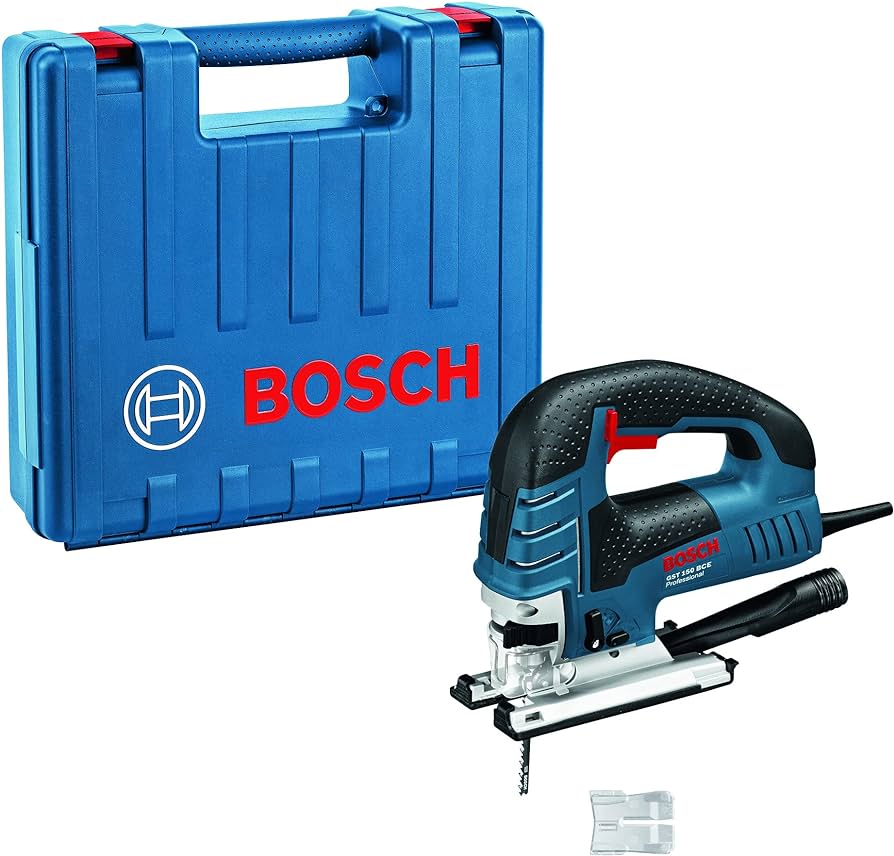

Power Source: Mains electricity.
Pros:
- Continuous power supply.
- Generally, more powerful than cordless variants.
Cons:
- Limited mobility due to the power cord.
- Requires an accessible power outlet.
Cordless Jigsaws
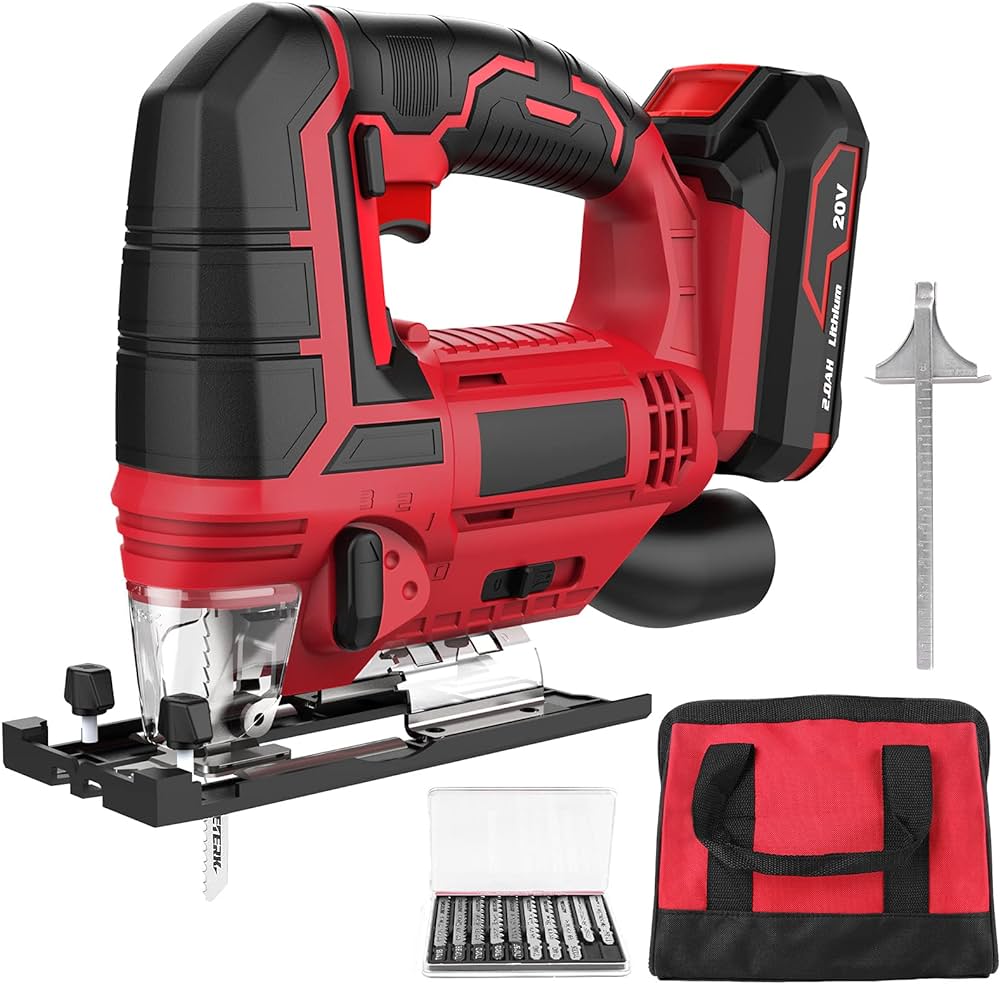

Power Source: Rechargeable batteries.
Pros:
- Greater mobility and flexibility.
- Ideal for outdoor use or places without an immediate power source.
Cons:
- Limited battery life.
- Might be less powerful compared to corded jigsaws.
Pneumatic Jigsaws
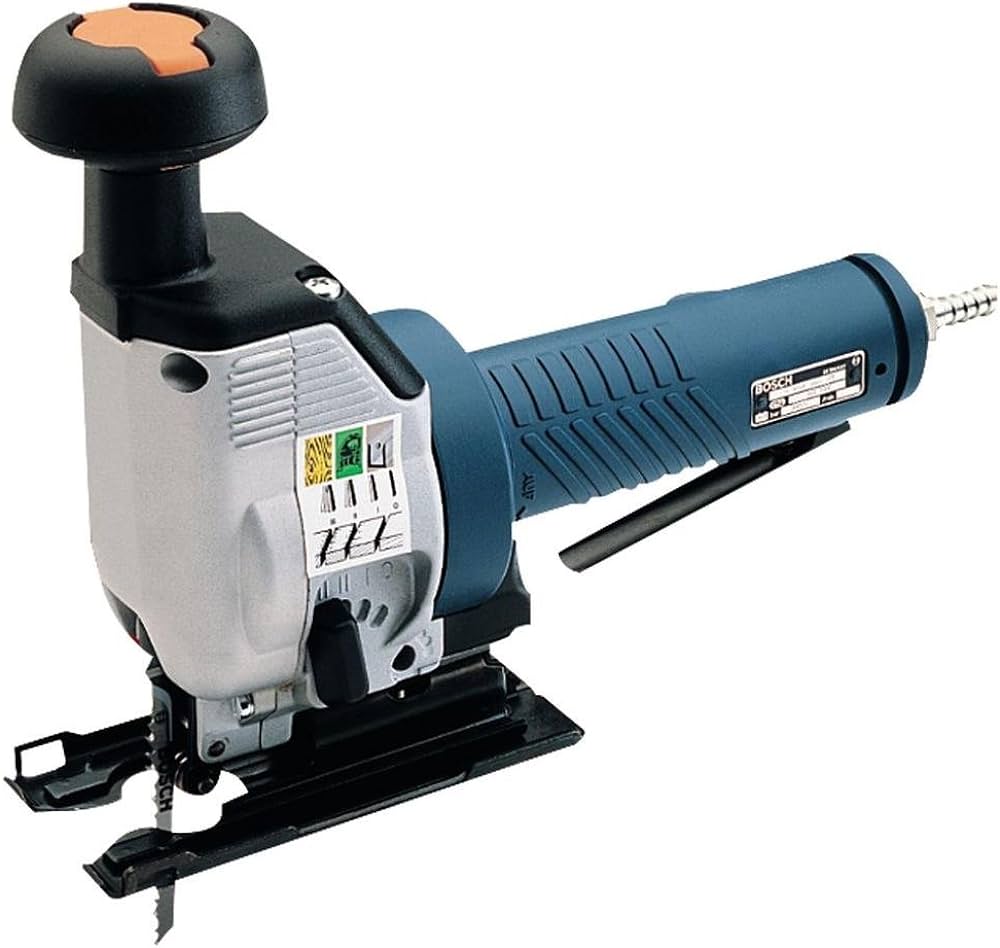

Power Source: Compressed air.
Pros:
- Powerful performance.
- Ideal for industrial applications.
Cons:
- Requires an air compressor.
- Less common than electric variants.
Orbital Jigsaws
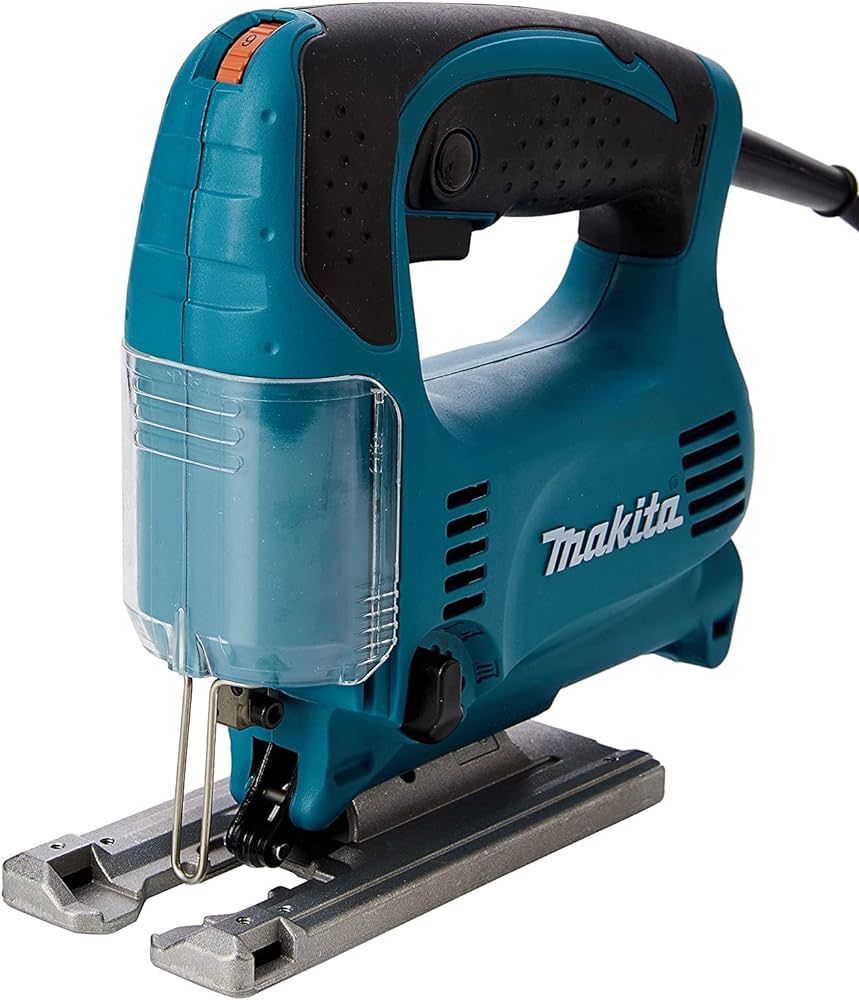

Features: These jigsaws move in a slightly circular or orbital pattern, rather than just up and down.
Pros:
- Faster cutting speeds.
- Better for aggressive cuts.
Cons:
- Might be too aggressive for some delicate projects.
- Typically more expensive.
Factors to Consider When Choosing a Jigsaw
- Power Source: Decide between corded, cordless, or pneumatic based on your workspace and power availability.
- Blade Type: Consider the material you will be cutting most frequently.
- Ergonomics: Ensure a comfortable grip and ease of use.
- Orbital Action: For aggressive cuts, an orbital jigsaw might be the best choice.
- Budget: Jigsaws come in a range of prices, so pick one that aligns with your budget.
Linquip: Your Partner in Finding the Right Jigsaw
Choosing the right jigsaw can be daunting, given the myriad options available. Linquip simplifies this process by offering a platform where you can compare different jigsaw models, read reviews, and make an informed decision. Whether you’re a professional seeking an industrial-grade tool or a DIY enthusiast looking for something suitable for home projects, Linquip has got you covered.
Special Jigsaw Features and Attachments
Variable Speed Control
Almost every modern jigsaw offers variable speed settings. This feature allows you to adjust the speed of the blade depending on the material you are cutting.
Advantages:
- Control: Better control over intricate cuts.
- Versatility: Allows for cutting through various materials efficiently.
Laser Guide
A laser guide projects a straight line onto the workpiece, assisting users in maintaining a straight cut.
Advantages:
- Precision: Reduces the chances of going off track.
- Convenience: Especially useful for beginners or those working on large pieces.
Dust Blower
This feature clears away sawdust from the cutting line, enhancing visibility and ensuring precision.
Advantages:
- Visibility: Keeps the cutting line clear.
- Cleanliness: Reduces post-work cleanup.
Tool-less Blade Change
Traditionally, changing a jigsaw blade required tools. Modern jigsaws often come with a tool-less blade change feature for quick and hassle-free blade swaps.
Advantages:
- Efficiency: Speeds up the blade-changing process.
- Convenience: No need to search for tools.
How Linquip Can Guide You
Feature Comparisons
With numerous jigsaw models on the market, each boasting different features, how do you decide which is right for you? Linquip offers detailed comparisons, highlighting the advantages and potential drawbacks of each feature.
Attachment Recommendations
Not all jigsaws come with every attachment or feature. Linquip can provide recommendations based on your specific needs. Whether you require a laser guide for precision or value a tool-less blade change for efficiency, Linquip guides you to models that meet your criteria.
Expert Reviews and User Feedback
On Linquip, you can find expert reviews detailing the practicalities of each jigsaw feature and attachment. Additionally, real user feedback provides insights into the day-to-day usage and durability of each tool.
The Evolution of Jigsaws
Historical Background
The precursor to the modern jigsaw was introduced in the 19th century, originally as a hand tool called the ‘fret saw’. Its primary function was to assist in detailed marquetry work. The term “jigsaw” came from the intricate jigsaw puzzles which the tool was used to produce.
From Manual to Electric
The transition from hand-powered to electric jigsaws was a revolutionary step, offering craftsmen speed and efficiency previously unheard of. The first electric jigsaws surfaced in the 1940s, providing a massive boost in power and precision.
Modern Innovations
With the advent of new technologies, jigsaws have seen a plethora of advancements:
- Battery-Powered Units: Offering portability without compromising on power.
- Digital Interfaces: Some high-end jigsaws now come with digital screens, allowing for more precise control over speed and blade movement.
- Safety Features: Features such as auto-stop and blade guards have made modern jigsaws much safer.
Linquip: Keeping You Updated
Latest in Jigsaw Technology
The world of tools is ever-evolving, and staying updated can be a challenge. Linquip’s platform is continuously updated with the latest models and technological advancements in jigsaws, ensuring users always have access to cutting-edge information.
Interactive Webinars and Workshops
Linquip often hosts webinars and interactive workshops, where industry experts discuss the newest trends, techniques, and innovations in the jigsaw realm. This not only educates users but also helps them make informed decisions.
Connect with Manufacturers
One unique feature Linquip offers is the ability for users to directly connect with jigsaw manufacturers. This allows for a deeper understanding of the tools, potential customizations, and even exclusive deals.
Conclusion
The journey of jigsaws, from humble hand tools to the advanced machines we see today, is a testament to human ingenuity and the relentless pursuit of perfection. These tools, which once aided in crafting simple jigsaw puzzles, now play a pivotal role in construction, design, and artistry worldwide.
In this constantly advancing landscape, Linquip stands as a beacon, illuminating the path for craftsmen, hobbyists, and professionals. Through detailed information, interactive sessions, and direct manufacturer connections, Linquip ensures that every individual, whether a novice or a veteran, finds their perfect jigsaw match. Embrace the blend of history and future with Linquip, and let every piece you craft resonate with precision and passion.
Download PDF for Types of Jigsaw
You can download the PDF format of this post from the link provided here.
Buy Equipment or Ask for a Service
By using Linquip RFQ Service, you can expect to receive quotations from various suppliers across multiple industries and regions.
Click Here to Request a Quotation From Suppliers and Service Providers
Read More on Linquip
- 19 Types of Saws + Characteristic & Usage
- 10 Types of Saw Blades + Characteristic & Applications
- 6 Types of Reciprocating Saws + Characteristic & Usage
- 8 Types of Hole Saws & Their Applications
- 4 Types of Miter Saws + Features & Usages
- 4 Types of Chop Saws + Applications & Characteristics
- 8 Types of Bandsaws + Their Usage & Characteristic
- 5 Types of Metal Cutting Saws + Features & Applications
- Different 15 Types of Hand Saws: Clear Guide
- 12 Types of Electric Saws: Clear Guide
- The 8 Best Hand Saw
- The 7 Best Jigsaw + Buying Guide
- The 10 Best Chain Saw Sharpener
- The 10 Best Miter Saw + Guide Select
- The 10 Best Electric Chainsaw + Buying Guide
- The 7 Best Portable Band Saws + Tips for Choosing
- The 10 Best Circular Saws in the USA
